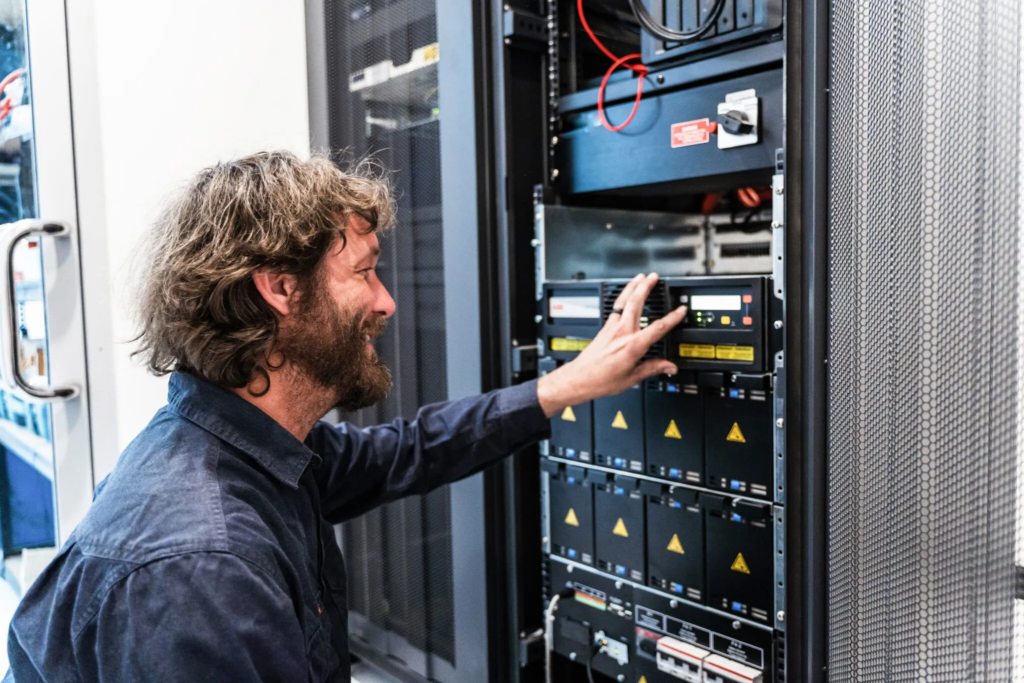Businesses in Western Australia, and indeed across the globe, face the challenge of ensuring that their critical systems remain operational during power outages. This is where Uninterruptible Power Supply (UPS) solutions come into play. But what makes UPS solutions reliable?
Understanding the Basics of UPS Solutions
An Uninterruptible Power Supply (UPS) is an electrical device that provides emergency power to a load when the input power source fails. Unlike backup generators, UPS systems provide near-instantaneous protection from input power interruptions by supplying energy stored in batteries, supercapacitors, or flywheels.
A UPS is typically used to protect hardware such as computers, data centres, telecommunication equipment, or other electrical equipment where an unexpected power disruption could cause serious business disruption or data loss.
Types of UPS Systems
There are three main types of UPS systems, each designed to cater to different needs and levels of protection:
- Standby (Offline) UPS: This is the most basic UPS system, which remains idle until a power outage occurs. During an outage, it switches to battery power. While it is cost-effective, it offers the least protection and may not be suitable for sensitive equipment.
- Line-Interactive UPS: This type of UPS can handle minor power fluctuations without switching to battery power. It uses an autotransformer to regulate voltage and is ideal for environments with frequent power sags and surges.
- Online (Double Conversion) UPS: This system provides the highest level of protection by continuously converting incoming AC power to DC and then back to AC. This double conversion process ensures a consistent and clean power supply, making it suitable for mission-critical applications.
Key Components of Reliable UPS Solutions

UPS solutions are made up of several components that you need to know about.
Batteries
The battery is the heart of any UPS system. The reliability of a UPS largely depends on the quality and maintenance of its batteries. Lead-acid batteries are commonly used in UPS systems due to their cost-effectiveness and reliability. However, advancements in battery technology have introduced lithium-ion batteries, which offer longer life spans, faster recharge times, and reduced maintenance.
Regular battery maintenance is crucial for ensuring the reliability of a UPS system. This includes periodic testing, cleaning, and replacement of batteries when necessary. Additionally, having a robust battery management system can help monitor battery health and predict failures before they occur.
Inverters and Converters
Inverters and converters are responsible for transforming the power from AC to DC and vice versa in an online UPS system. The efficiency and reliability of these components directly impact the overall performance of the UPS. High-quality inverters and converters ensure minimal power loss and provide a stable power supply to connected equipment.
Power Capacity and Scalability
The power capacity of a UPS system determines the amount of load it can support during an outage. A reliable UPS solution should be able to handle the maximum load requirements of the connected equipment. Moreover, scalability is an important factor to consider, as businesses may need to expand their operations and increase power demands over time. Modular UPS systems offer the flexibility to add more capacity as needed without significant downtime.
Design and Installation Considerations

A well-designed UPS system is critical for ensuring reliability. This involves understanding the specific power requirements of a business and selecting the appropriate UPS type and configuration. Factors such as the criticality of the load, duration of backup power needed, and environmental conditions should be considered during the design phase.
Redundancy and Failover
Redundancy is a key design principle that enhances the reliability of UPS solutions. By having multiple UPS units running in parallel, businesses can ensure continuous power supply even if one unit fails. Failover mechanisms should also be in place to automatically switch to backup systems in the event of a failure, minimising downtime and maintaining operational continuity.
Environmental Considerations
The environment in which a UPS system operates can significantly affect its reliability. Factors such as temperature, humidity, and dust can impact the performance of UPS components. Proper ventilation, climate control, and regular cleaning are essential to maintaining the optimal operating conditions for UPS systems.
Conclusion
Uninterruptible Power Supply (UPS) solutions are a vital component of modern business infrastructure. Their reliability is attributed to a combination of factors, including robust components, thoughtful design, regular maintenance, and expert support.
By investing in reliable UPS solutions, businesses can protect their operations, data, and reputation from the adverse effects of power disruptions. Whether it’s a small office or a large data centre, a well-designed and maintained UPS system is an essential asset for ensuring business continuity and success.





